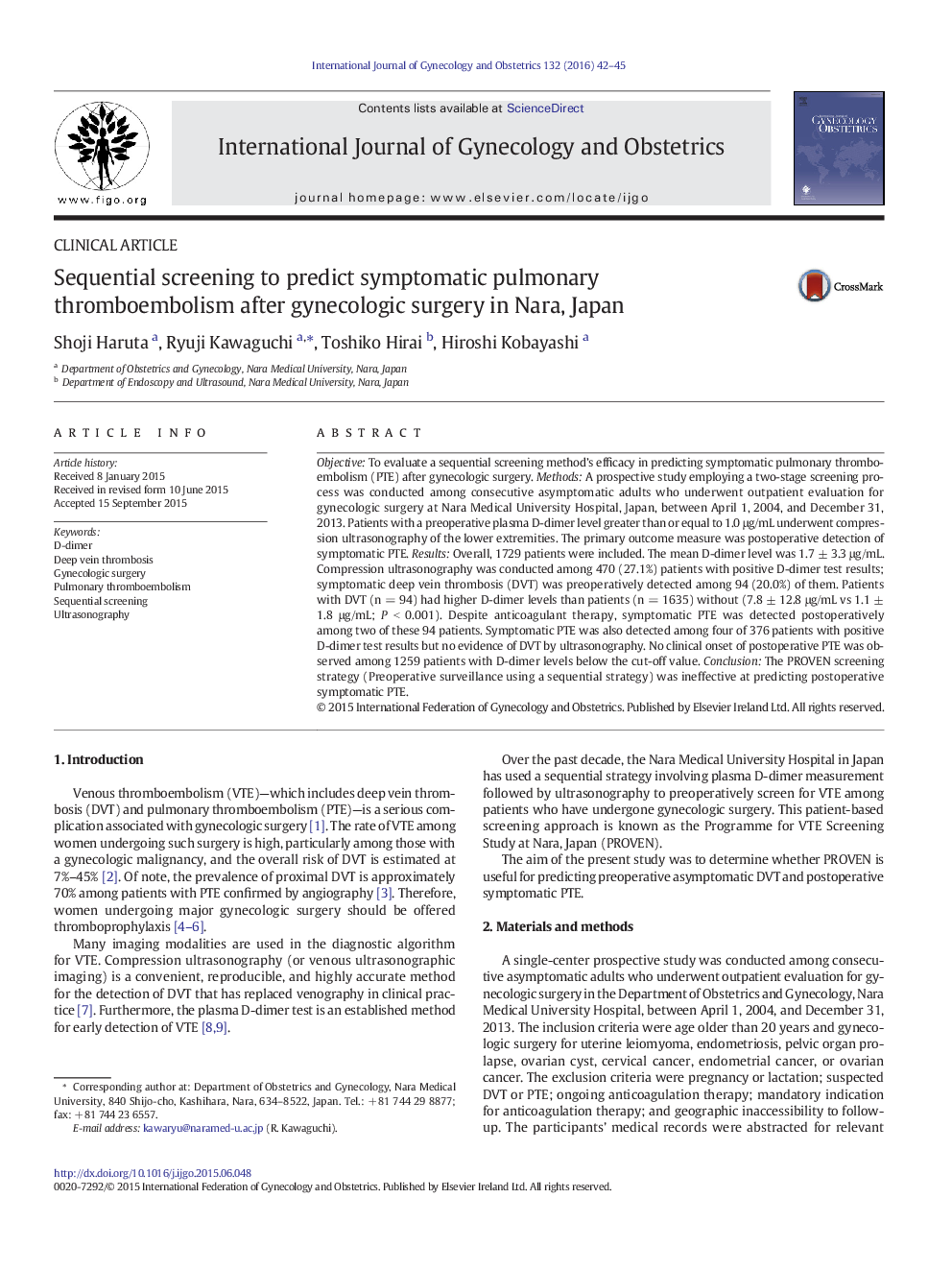| Article ID | Journal | Published Year | Pages | File Type |
|---|---|---|---|---|
| 3952262 | International Journal of Gynecology & Obstetrics | 2016 | 4 Pages |
ObjectiveTo evaluate a sequential screening method’s efficacy in predicting symptomatic pulmonary thromboembolism (PTE) after gynecologic surgery.MethodsA prospective study employing a two-stage screening process was conducted among consecutive asymptomatic adults who underwent outpatient evaluation for gynecologic surgery at Nara Medical University Hospital, Japan, between April 1, 2004, and December 31, 2013. Patients with a preoperative plasma D-dimer level greater than or equal to 1.0 μg/mL underwent compression ultrasonography of the lower extremities. The primary outcome measure was postoperative detection of symptomatic PTE.ResultsOverall, 1729 patients were included. The mean D-dimer level was 1.7 ± 3.3 μg/mL. Compression ultrasonography was conducted among 470 (27.1%) patients with positive D-dimer test results; symptomatic deep vein thrombosis (DVT) was preoperatively detected among 94 (20.0%) of them. Patients with DVT (n = 94) had higher D-dimer levels than patients (n = 1635) without (7.8 ± 12.8 μg/mL vs 1.1 ± 1.8 μg/mL; P < 0.001). Despite anticoagulant therapy, symptomatic PTE was detected postoperatively among two of these 94 patients. Symptomatic PTE was also detected among four of 376 patients with positive D-dimer test results but no evidence of DVT by ultrasonography. No clinical onset of postoperative PTE was observed among 1259 patients with D-dimer levels below the cut-off value.ConclusionThe PROVEN screening strategy (Preoperative surveillance using a sequential strategy) was ineffective at predicting postoperative symptomatic PTE.
